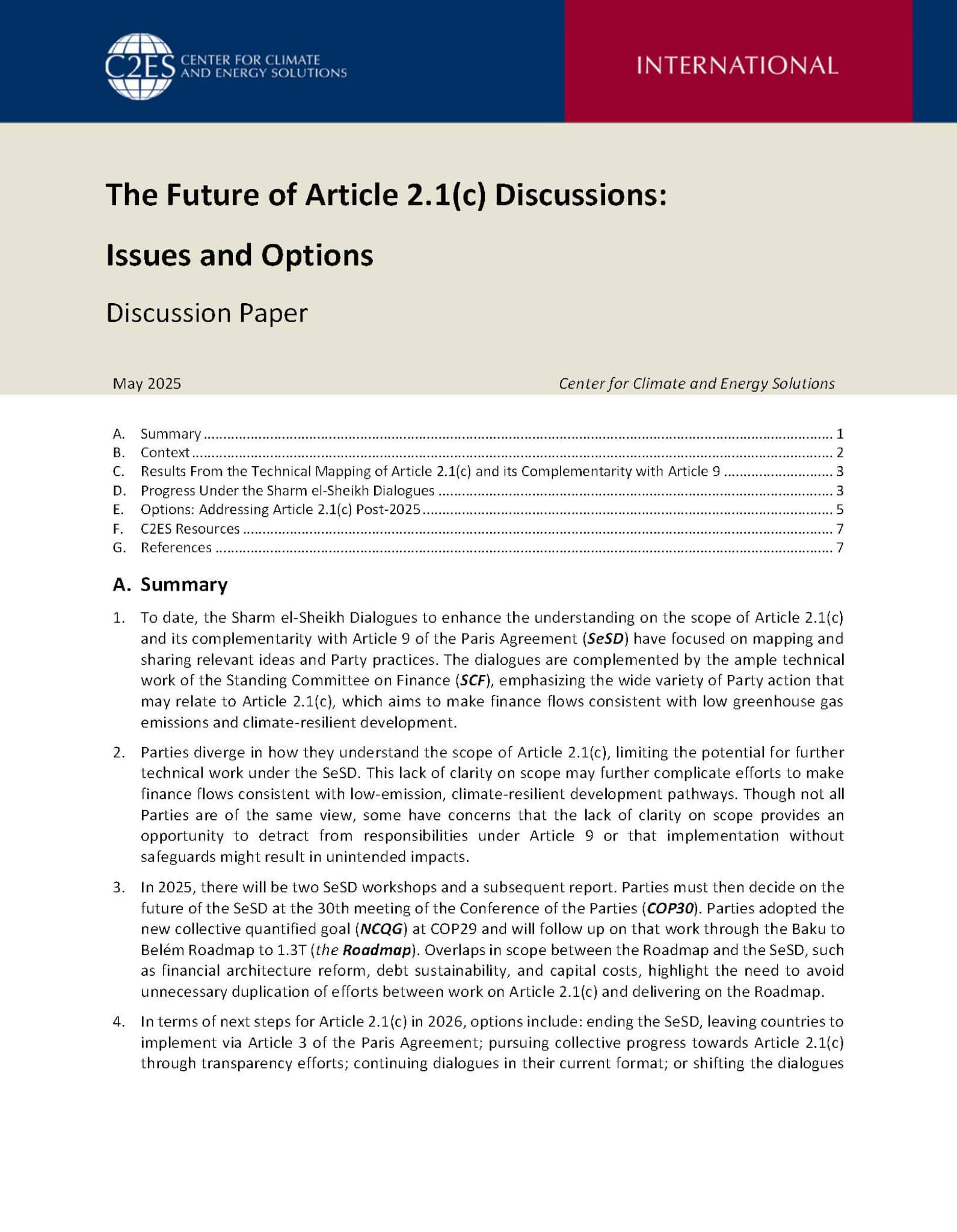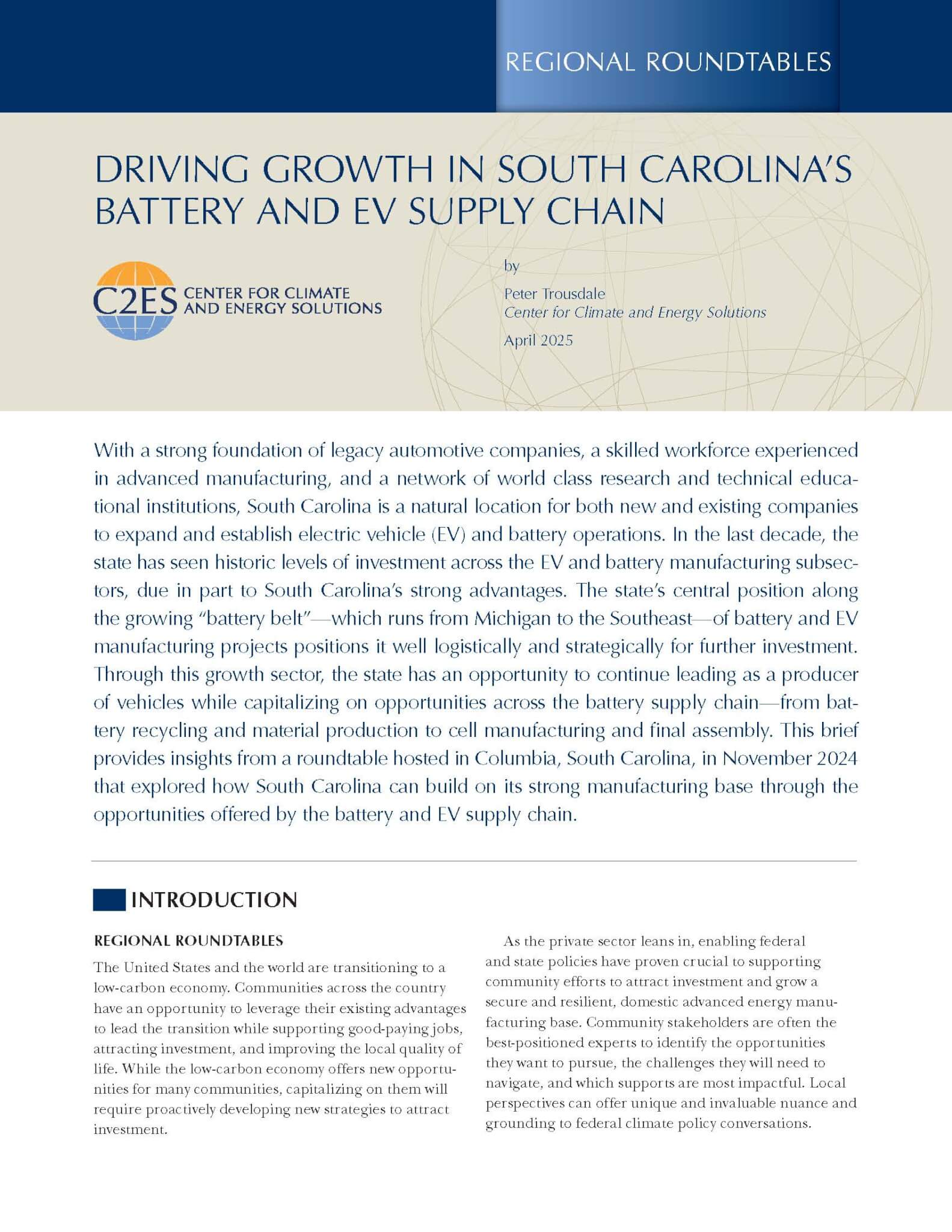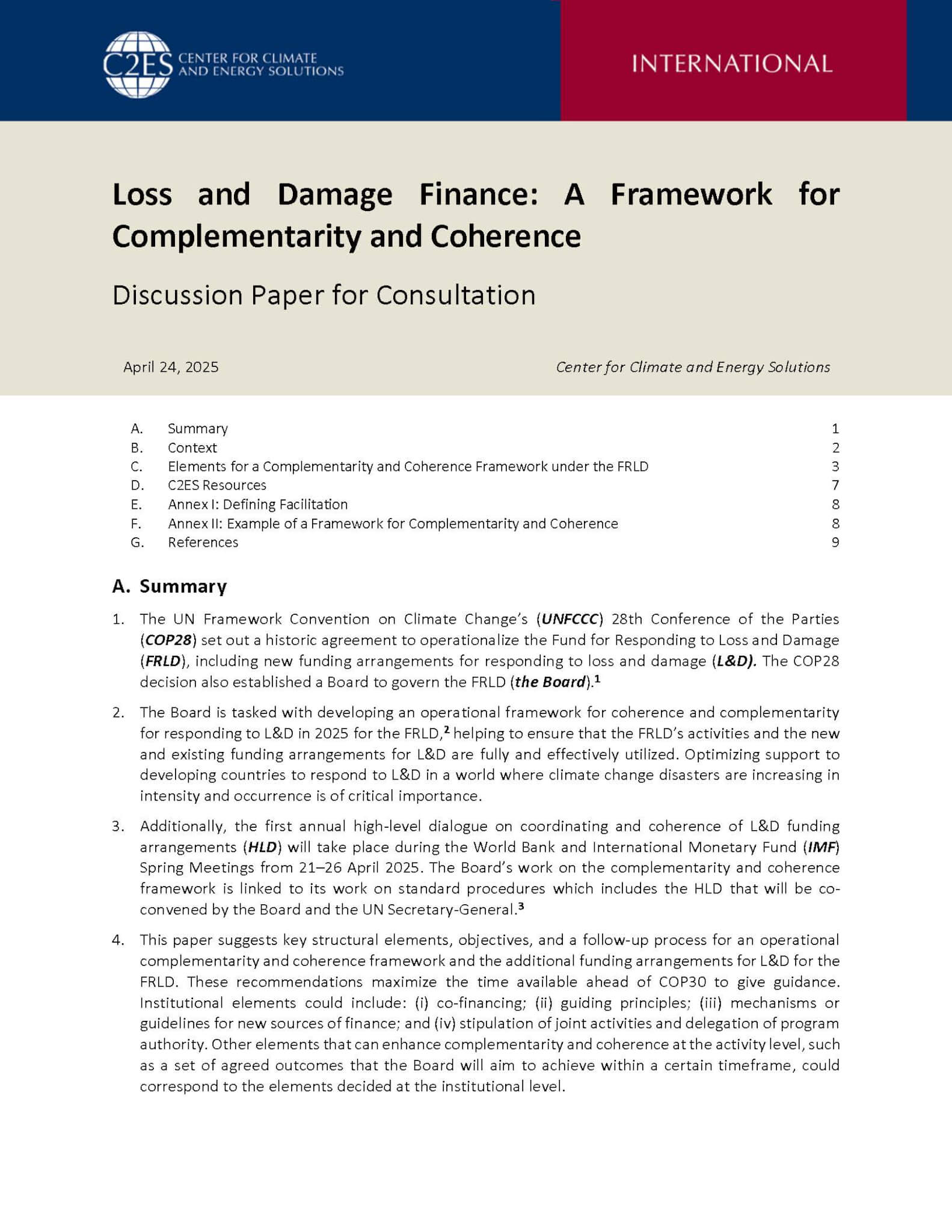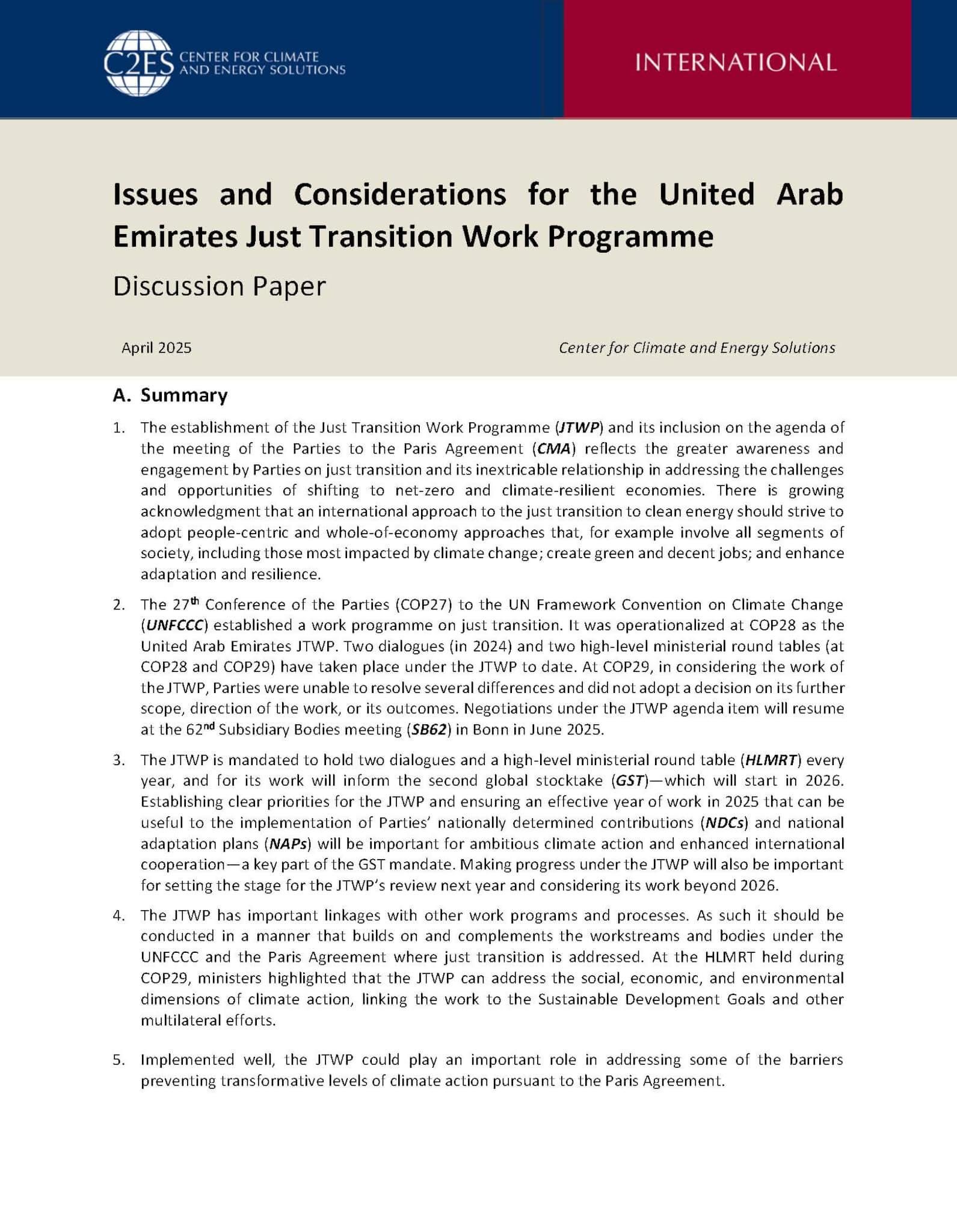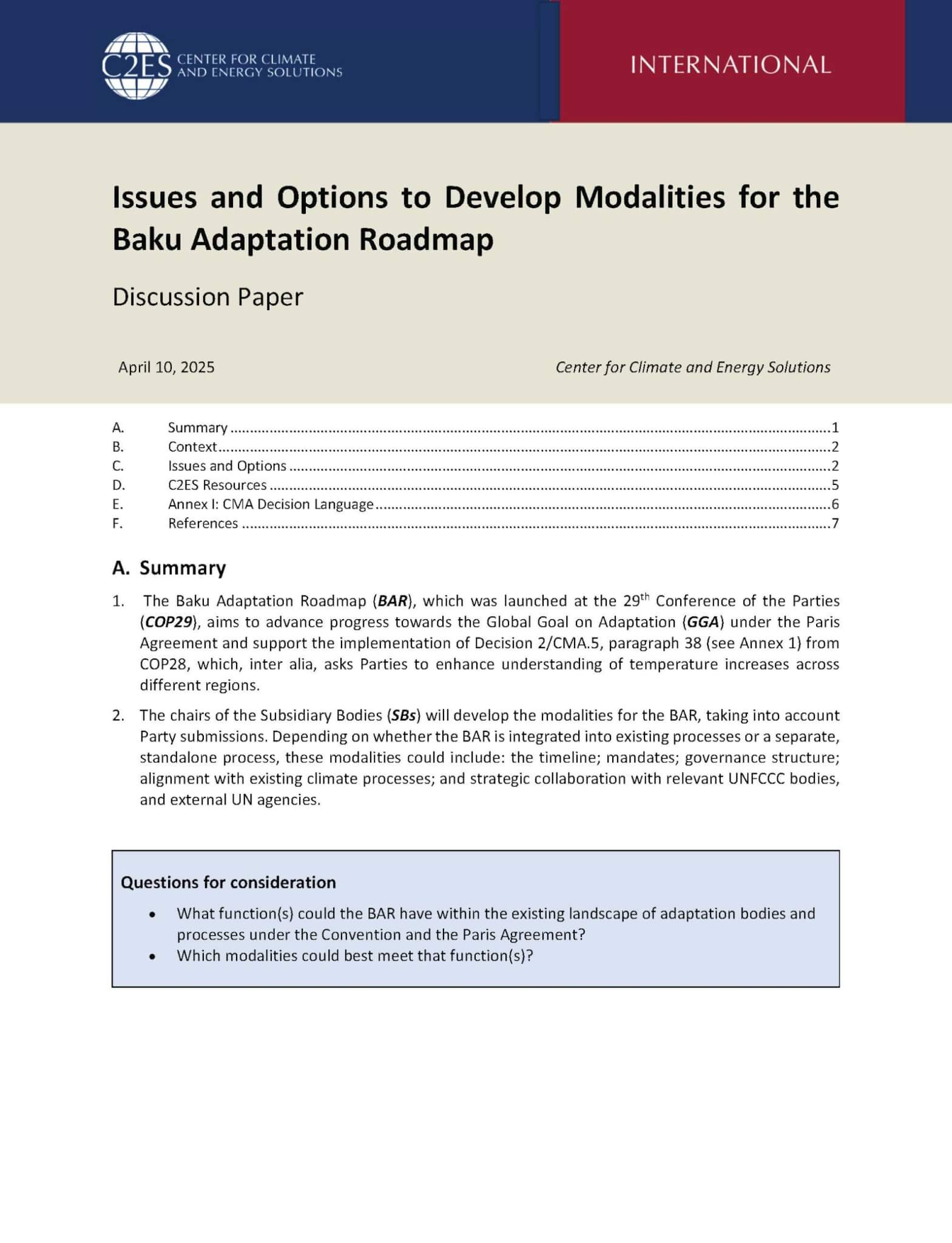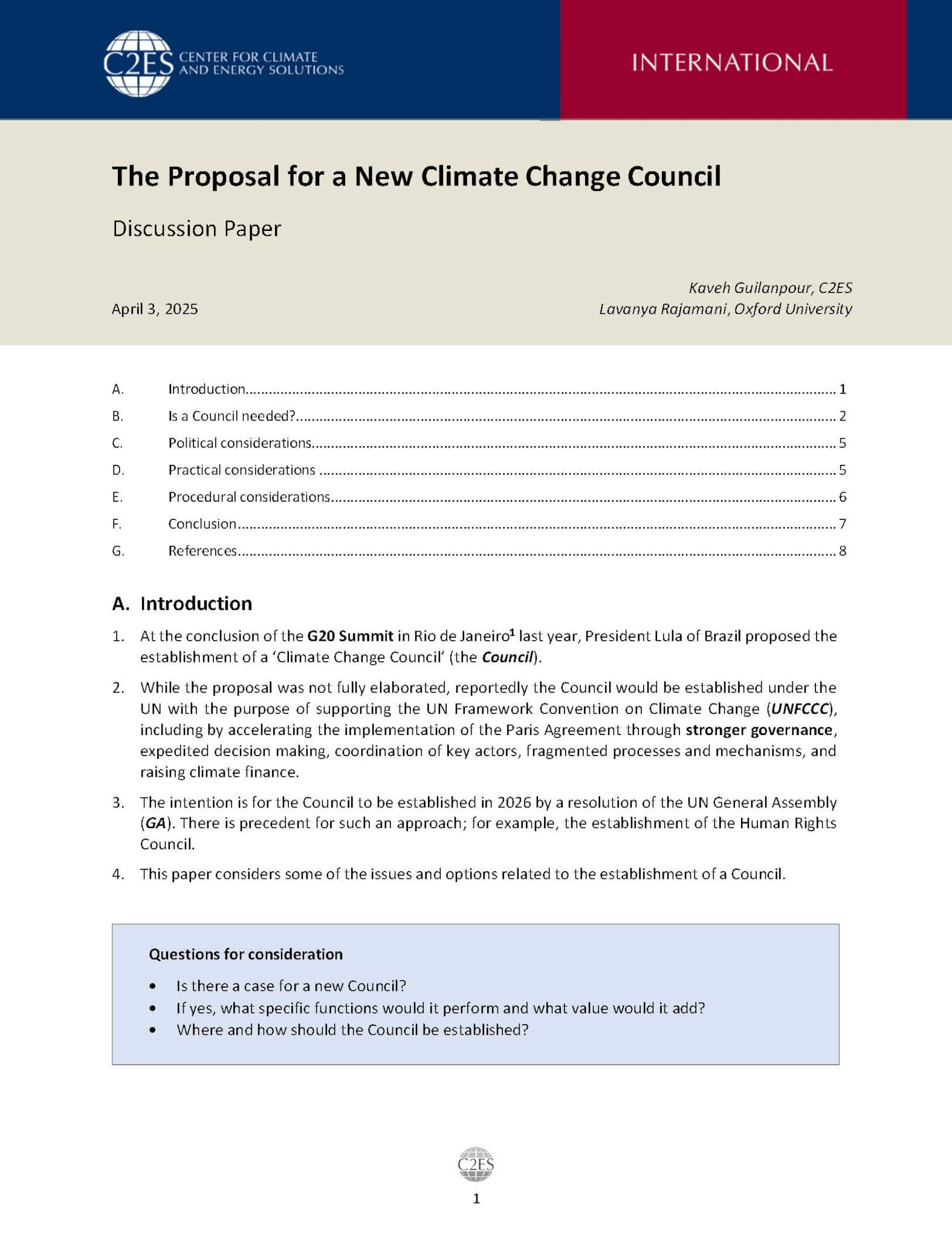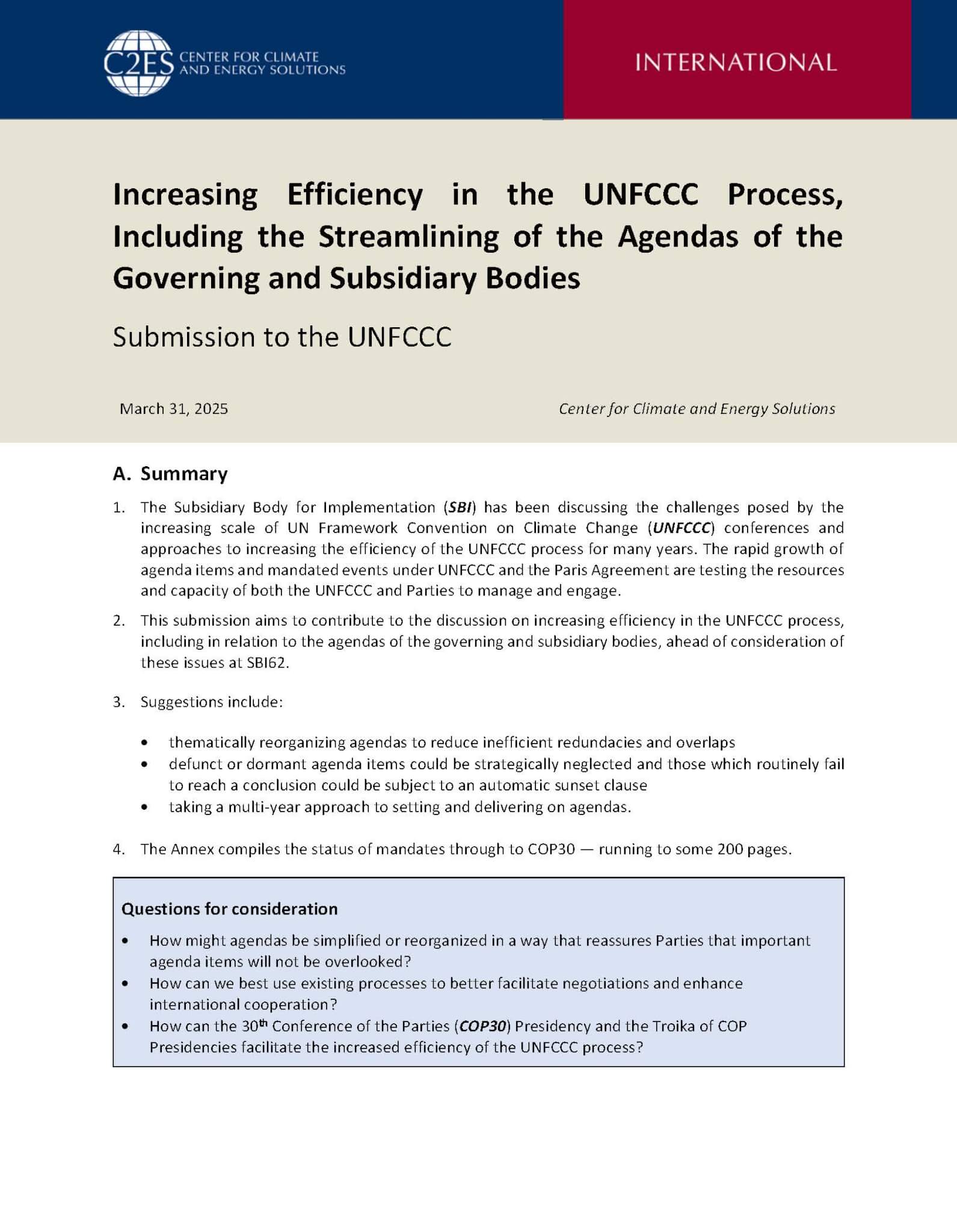To date, the Sharm el-Sheikh Dialogues to enhance the understanding on the scope of Article 2.1(c) and its complementarity with Article 9 of the Paris Agreement (SeSD) have focused on mapping and sharing relevant ideas and Party practices. The dialogues are complemented by the ample technical work of the Standing Committee on Finance (SCF), emphasizing […]
